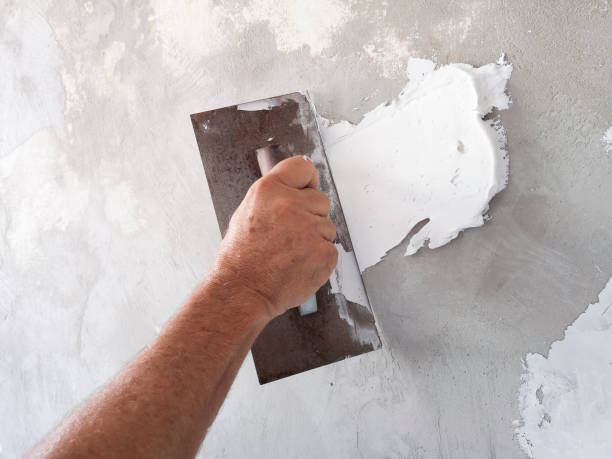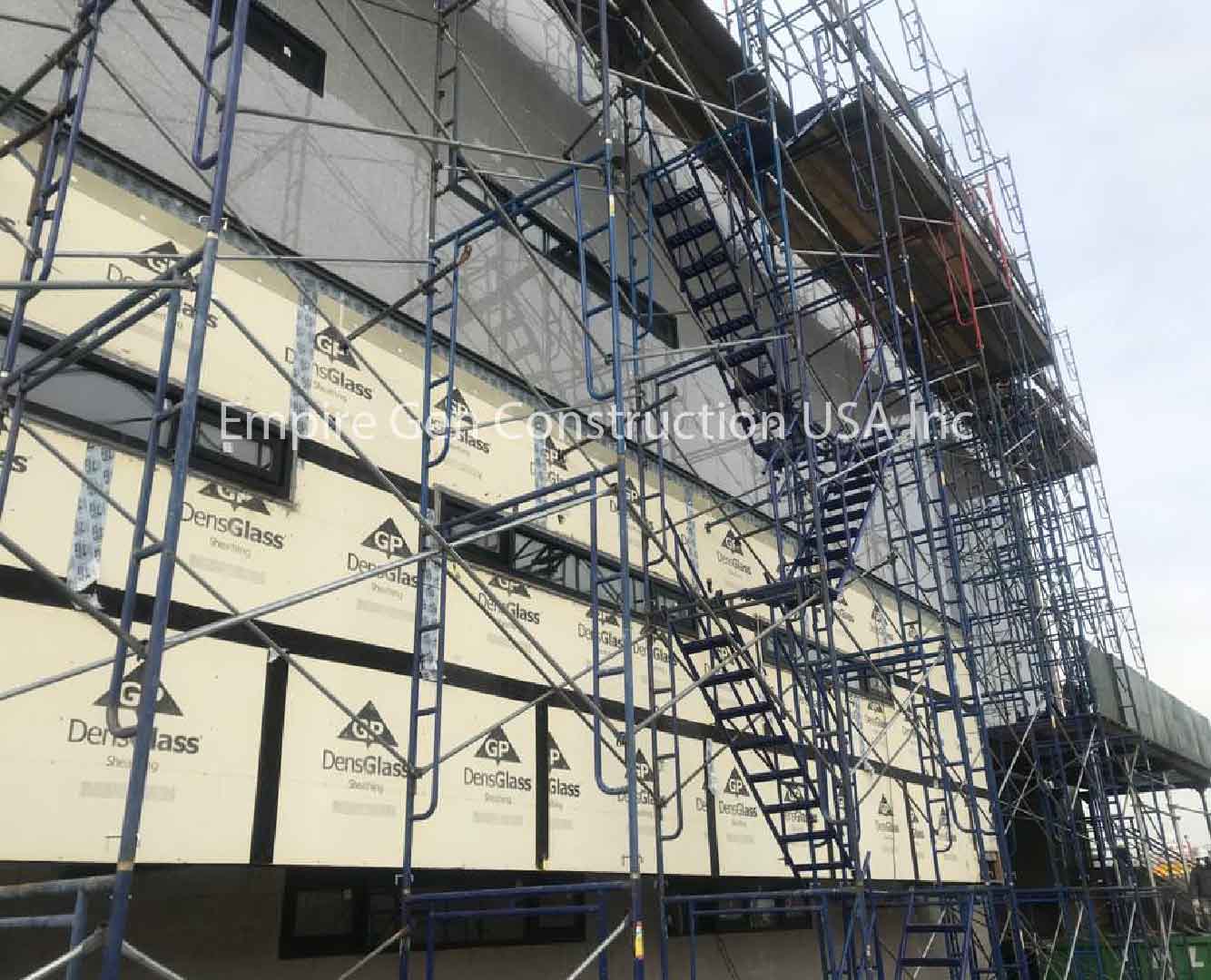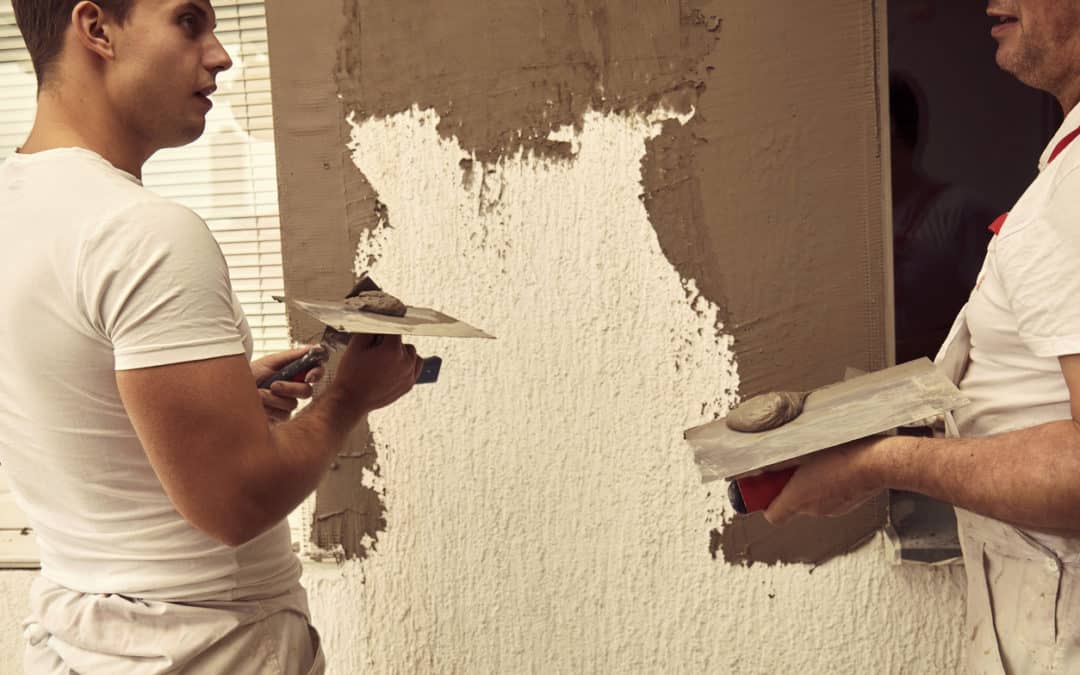Change Your Space with the Help of a Trusted Stucco Contractor
Wiki Article
Checking Out the Flexibility of Stucco in Modern Architecture
Stucco has long been recognized for its visual charm and versatility, yet its function in contemporary architecture warrants a better examination. By exploring its ingenious applications, from striking facades to energy-efficient styles, one can value exactly how stucco is redefining the boundaries of building expression.Historical Significance of Stucco
The historic importance of stucco is profound, as it has actually played an essential role in architectural methods throughout numerous societies for centuries. Stemming in old human beings, stucco was utilized by the Egyptians and Greeks as a functional and resilient surface for both indoor and exterior surfaces. Its adaptability to different climates and capability to mimic much more costly products made it a preferred choice.In the Roman age, stucco came to be a primary attractive aspect, utilized extensively in public buildings, rental properties, and temples. The Romans refined the application techniques, permitting detailed styles and relief sculptures. During the Renaissance, stucco experienced a resurgence, especially in Italy, where it was used in elaborate exteriors and decorative information, showcasing the creativity of the period.

Modern Applications in Layout
Stucco has actually located renewed significance in modern-day architecture because of its adaptability and aesthetic allure (stucco contractor). This conventional material is progressively made use of in contemporary style, linking the void in between timeless and modern-day appearances. Developers and architects appreciate stucco for its flexibility, permitting it to be applied in various styles-- from minimalist frameworks to specify Mediterranean layouts
In domestic projects, stucco provides a tidy, smooth finish that boosts the visual cohesion of exteriors. Its ability to adapt different shapes and surfaces makes it an excellent option for both new building and constructions and renovation projects. Additionally, stucco's durability and low maintenance requirements add to its growing appeal in metropolitan setups, where resilient products are vital.
Industrial applications have likewise embraced stucco, with many companies selecting this material to create inviting and unique store fronts. Using stucco in public structures, such as institutions and neighborhood facilities, showcases its potential for creating aesthetically attractive atmospheres while giving outstanding insulation residential or commercial properties.
Color and Appearance Technologies
Exploring color and appearance advancements in stucco has actually opened new avenues for designers and engineers, boosting the material's aesthetic effect in modern-day building. Recent improvements in pigment technology have actually enabled a wider range of shades, enabling designers to create striking facades that integrate perfectly with their environments or stand out as vibrant building declarations. This flexibility in shade selection supplies designers the ability to stimulate specific psychological responses and integrate with regional looks.Structure innovations have similarly changed stucco applications. Techniques such as shoveling, splashing, and marking have actually brought about diverse surface coatings, varying from smooth and fine-tuned to tactile and tough. These variations not just contribute to the structure's personality however also play a crucial function in light communication, boosting the visual deepness and dimensionality of surfaces.
Additionally, the introduction of artificial stucco options has actually increased design possibilities, using boosted durability and weather condition resistance while keeping visual allure. As architects continue to explore cutting-edge shade combinations and textured coatings, stucco remains a pivotal component in contemporary architecture, showcasing the product's flexibility and timeless relevance in contemporary layout.
Sustainability and Power Effectiveness
Technologies in shade and structure have not only enhanced the aesthetic allure of stucco yet likewise led the way for greater emphasis on sustainability and power performance in contemporary architecture. As ecological concerns become progressively popular, the construction industry is transforming its attention to this page products that add favorably to ecological balance.Stucco, made up largely of natural materials such as lime, cement, and sand, uses a sustainable option to even more resource-intensive building products. Its long life and toughness decrease the demand for frequent replacements, consequently reducing waste and source intake in time. Moreover, modern stucco formulas commonly important link include energy-efficient additives that boost insulation properties, lowering heating & cooling expenses for buildings.
The reflective top qualities of stucco can additionally be engineered to mitigate warmth absorption, contributing to cooler interior environments and much less dependence on man-made climate control systems. By promoting power conservation and lowering the carbon footprint of structures, stucco straightens with the concepts of lasting design. As engineers and contractors embrace environment-friendly techniques and innovative techniques, stucco stands out as a flexible and liable option in modern layout.

Situation Studies of Stucco Projects
The convenience of stucco as a structure product is exemplified in various effective building jobs that highlight its aesthetic and practical benefits. One remarkable example is the improvement of the historic Casa de la Guerra in Santa Barbara, California. Using stucco not only protected the structure's Spanish Colonial Rebirth design however also enhanced its toughness and weather resistance, making certain long life while keeping building stability.
An additional engaging instance is the contemporary residential project, the Cactus Residence in Scottsdale, Arizona. stucco contractor. This striking home features a smooth stucco finish that balances with the bordering desert landscape. The stucco's light shade shows heat, contributing to energy effectiveness, while the distinctive surfaces add visual interest
Furthermore, the Kings Cross redevelopment in London showcases the versatility of stucco in city setups. The application of stucco on modern-day mixed-use structures creates a natural visual that appreciates historic context while accepting modern style principles.
These study show how stucco can offer different building purposes, from conservation and energy effectiveness to visual enhancement, making it a flexible option in modern design.
Verdict
 To conclude, stucco's historical importance and modern adaptability make it a valuable product in modern design. Its capacity to integrate classic visual appeals with cutting-edge layout, incorporated with improvements in color and structure, enhances its appeal. Stucco's insulating residential visit homepage properties contribute to power effectiveness, while its lasting attributes align with existing ecological concerns. As demonstrated via different study, stucco continues to play a crucial role fit the building landscape of the modern-day period.
To conclude, stucco's historical importance and modern adaptability make it a valuable product in modern design. Its capacity to integrate classic visual appeals with cutting-edge layout, incorporated with improvements in color and structure, enhances its appeal. Stucco's insulating residential visit homepage properties contribute to power effectiveness, while its lasting attributes align with existing ecological concerns. As demonstrated via different study, stucco continues to play a crucial role fit the building landscape of the modern-day period. 
In final thought, stucco's historic value and modern-day versatility make it a beneficial material in modern style.
Report this wiki page